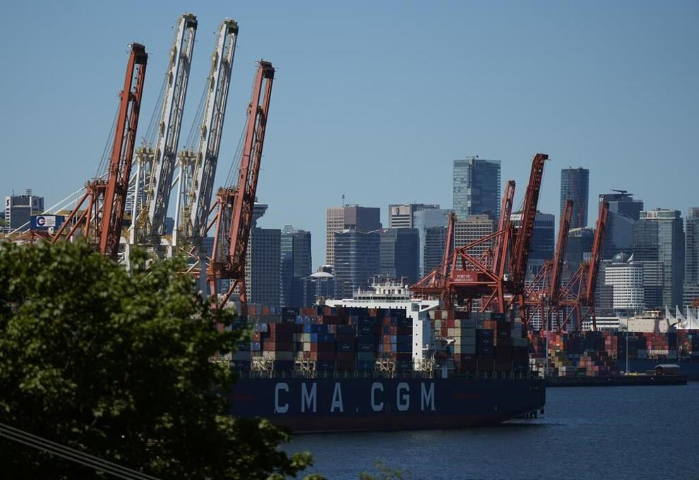
Canadian exports of thermal coal increased another seven per cent last year reaching the highest level in almost a decade. Gantry cranes are shown as a container ship is docked at port in Vancouver, on Wednesday, July 19, 2023. THE CANADIAN PRESS/Darryl
In 2023, Canada experienced a notable increase in its exports of thermal coal, reaching the highest levels in nearly a decade. Despite governmental efforts to curtail coal usage both domestically and abroad, the country saw a seven percent uptick in thermal coal exports compared to the previous year.
This surge in exports of thermal coal, primarily utilized in electricity generation, comes at a time when Canada has been actively advocating for the global phase-out of coal-fired power. However, despite commitments made by the Liberal government three years ago to cease all thermal coal exports by 2030, export levels have continued to rise steadily, showing a nearly 20 percent increase since the promise was first made.
Recent statistics released by the ports of Vancouver and Prince Rupert revealed that a substantial 19.5 million tonnes of thermal coal were exported through these terminals in 2023. This figure marks an increase from just over 18 million tonnes in 2022 and nearly doubles the amount exported in 2015 when the current government assumed power.
The majority of Canada's coal exports originate from the United States, particularly from states like Wyoming and Montana, and are transported by rail to ports in Vancouver before being shipped across the Pacific. This trend has been exacerbated by the reluctance of most U.S. West Coast ports to handle thermal coal exports anymore, according to Fraser Thomson, a legal expert at Ecojustice.
Thomson emphasized the urgency for the Canadian government to fulfill its promise of halting both domestic coal exports and the transit of coal from the U.S. through Canadian ports. He stressed the necessity for decisive action, stating that the issue of rising coal exports is worsening and demands immediate attention.
Coal is widely recognized as one of the most polluting sources of energy, contributing significantly to greenhouse gas emissions and air pollution. Despite efforts to transition to cleaner energy sources, global coal consumption saw an expansion in 2022, partly due to increased demand resulting from geopolitical factors such as the Russian invasion of Ukraine and subsequent spikes in gas prices.
China remains the world's largest consumer of thermal coal, accounting for over half of global usage, followed by India at almost 15 percent. Recognizing the urgency of the situation, Environment Minister Steven Guilbeault announced plans to unveil a strategy to phase out coal exports later in the year.
However, the lack of immediate action from the government has led to frustration among some lawmakers. NDP MP Laurel Collins introduced a private member's bill to expedite the end of coal exports after growing impatient with the government's inaction. Collins expressed dismay at the continued rise in coal exports despite assurances from the government, highlighting the need for a transition plan to support workers affected by the coal industry's decline.
Canada's role in the global effort to combat climate change has also come under scrutiny. Despite being a founding member of the Powering Past Coal Alliance, aimed at reducing coal usage worldwide, Canada continues to export coal, tarnishing its reputation as a leader in the fight against climate change.
While Canada has made significant strides in reducing domestic coal usage, particularly with the closure of coal-fired power plants in Ontario, challenges remain in transitioning away from coal exports. Alberta's coal mines remain a significant source of thermal coal exports, primarily destined for Asian markets via ports in British Columbia.
In conclusion, Canada's continued reliance on thermal coal exports poses a challenge to its commitments to combat climate change and transition to cleaner energy sources. Despite pledges to phase out coal exports, the country has yet to take decisive action, raising concerns about its credibility in the global fight against climate change.















